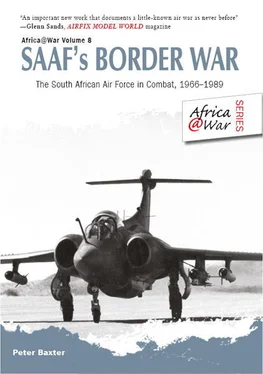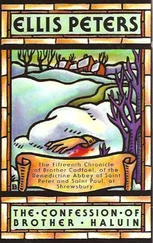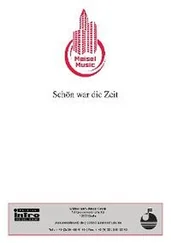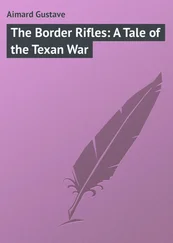Peter Baxter - SAAF's Border War
Здесь есть возможность читать онлайн «Peter Baxter - SAAF's Border War» весь текст электронной книги совершенно бесплатно (целиком полную версию без сокращений). В некоторых случаях можно слушать аудио, скачать через торрент в формате fb2 и присутствует краткое содержание. Город: Solihull, Год выпуска: 2013, ISBN: 2013, Издательство: Helion & Company, Жанр: military_history, на английском языке. Описание произведения, (предисловие) а так же отзывы посетителей доступны на портале библиотеки ЛибКат.
- Название:SAAF's Border War
- Автор:
- Издательство:Helion & Company
- Жанр:
- Год:2013
- Город:Solihull
- ISBN:978-1-908916-23-5
- Рейтинг книги:3 / 5. Голосов: 1
-
Избранное:Добавить в избранное
- Отзывы:
-
Ваша оценка:
- 60
- 1
- 2
- 3
- 4
- 5
SAAF's Border War: краткое содержание, описание и аннотация
Предлагаем к чтению аннотацию, описание, краткое содержание или предисловие (зависит от того, что написал сам автор книги «SAAF's Border War»). Если вы не нашли необходимую информацию о книге — напишите в комментариях, мы постараемся отыскать её.
SAAF's Border War — читать онлайн бесплатно полную книгу (весь текст) целиком
Ниже представлен текст книги, разбитый по страницам. Система сохранения места последней прочитанной страницы, позволяет с удобством читать онлайн бесплатно книгу «SAAF's Border War», без необходимости каждый раз заново искать на чём Вы остановились. Поставьте закладку, и сможете в любой момент перейти на страницу, на которой закончили чтение.
Интервал:
Закладка:
Initially, it had appeared as if the camp might have been deserted but an examination of film footage recorded by the South Africans’ Vinten F95 camera revealed chaotic scenes on the ground in the midst of the drop that later concurred with the estimated death toll of a rather modest 160 killed and 500 wounded.
A pleasing epilogue to a highly successful raid was the shooting down of two Zambian Air Force Macchi aircraft by ZIPRA forces in a fit of the jitters.
For the next month or so the 12 Squadron Canberra fleet saw considerable action in support of a sequence of SADF raids into southern and central Angola from Owamboland and Caprivi, dealing with a number of known or suspected SWAPO bases. Operations Rekstok and Saffran included aerial bombardments of a number of targets in Angola and Zambia along with photoreconnaissance flights by Mirage III RZs.
During the course of March 1979 a series of aerial raids was launched against targets inside Angola by Canberra bombers attacking targets in Muongo on 8 March in east–central Angola, followed later on the same day by Canberra attacks delivered against Vila Franca and Capindi, both east of the rail port of Lobito. The following day, 9 March, it was the turn of Henhombe, followed by Huambango, Henhombe again and Oshono. Attacks continued a few days later, on 14 March, this time targeting a large ANC training facility at Nova Catengue, situated some 40 kilometres south of Lobito, followed later on the same day by an attack against the settlement of Ediva, less that 100 kilometres into Angola in the southwest.
This incident has remained a curiosity in the history of the Border War. Immediately after the bomb release over Ediva, an aircraft piloted by Lieutenant Wally Marais was noticed to still have its bomb-bay doors open. Radio calls failed to elicit a response from either member of the crew. A companion aircraft manoeuvred close in and, although noticing no outward signs of damage to the aircraft, was able to determine that the pilot was slumped over the controls.
The stricken Canberra climbed slowly to 2,000 feet while decreasing speed, then, banking gently to port, decreased speed to about 200 knots before pitching violently upward, stalling and then plunging into the ground.
An intensive air search undertaken by two Mirage FICZs failed to locate the wreckage or to establish the cause of the crash or the fate of the crew. The moment that news of the loss of the Canberra became general the Angolans were quick to claim credit. Communiqués declared that six SAAF aircraft had been shot down during repeated bombing raids between 6 and 15 March, during which 132 tons of bombs had been dropped, killing 12 people and wounding thirty. The SADF made no effort to correct this misinformation other than to issue, through a spokesman, the comment that the Angolan communiqué contained “…certain delectable unthruths”. [12] Steenkamp, Willem. South Africa’s Border War: 1966–1989 , Ashanti, Gibraltar, 1989, p. 86.
One such untruth must surely have been the death toll which would most certainly have exceeded a mere 12 fatalities.
Toward the end of 1979, meanwhile, the SAAF found itself frequently in the air over Zambia and Mozambique in support of Rhodesian cross-border raids. This was a critical year in the bitter and bloody war being fought north of the Limpopo as the beleaguered and depleted Rhodesian security forces increasingly sought to gain negotiation leverage by the relentless pummelling of guerrilla rear bases in Zambia and Mozambique and, moreover, to make the point to both host countries that aiding the enemies of Rhodesia would come at a mighty and unsustainable cost.
The first of these was Operation Cucumber which took place between 6 and 9 July and involved four SAAF Canberras accompanying RhAF Canberras on a low-level attack on a ZANLA base southeast of Cabora Bassa dam in the Tete Province of Mozambique. [13] ZANLA, or the Zimbabwe African National Liberation Army, was the armed wing of ZANU, one of two nationalist factions fighting to overthrow white rule in Rhodesia.
Between 21 and 24 August 12 Squadron was again alongside RhAF Canberras, this time in an operation codenamed Placid , attacking ZIPRA targets in Zambia: four in Mulungusi, one in Rufunsa and two in Solwezi. The most iconic and memorable SAAF/RhAF combined operation, however, was Operation Uric , or Bootlace as it was codenamed in South Africa, which took place between 2 and 8 September 1979 and involved a comprehensive series of ground and air attacks on various targets along the Limpopo corridor running between the Mozambican capital of Maputo and the Rhodesian border at Malvernia/Vila Salazar.
Operation Uric was one of a series of hard-hitting, lastminute operations staged by the exhausted but unbroken Rhodesian security forces as a curtain-call to 90 years of proud military tradition, much of it undertaken in the company of the Springboks; certainly the involvement of the SAAF in this operation was a fitting valediction to a fading partner in arms. The operation required virtually every air asset the RhAF could put in the air and more besides. The Rhodesian commitment included eight aging Hawker Hunter strike jets, six Canberras, 12 C-47 Dakotas, six Cessna Lynx and 28 helicopters, mainly Alouette IIIs but also including a small flight of Bell 205s. The South African contribution amounted to 15 Pumas and two Super Frelons drawn from 19 and 15 squadrons respectively.
The operation involved a series of precision airstrikes targeting primarily the rail and road bridges up the length of the Limpopo corridor, with engineers and members of the SAS attempting to demolish the substantial road and rail bridge over the Limpopo at Aldeia da Barragem adjacent to the town of Chirunduo. An RhAF Bell 205 was lost during this action with a Rhodesian flight engineer killed and, although the bridge was seriously damaged, it was not destroyed. The operation also witnessed the loss of a South African Puma that was brought down by an RPG-7 rocket fired from the ground. The missile impacted the helicopter immediately behind the pilot, causing a violent roll to the right before the ship crashed into the ground in a ball of flame. Killed were Captain Paul Denzel Velleman, co-pilot Lieutenant Nigel David Osborne and flight engineer Sergeant Dirk Wilhelmus Marthinus (Dick) Retief. None of the 14 Rhodesian soldiers on board survived. The moment marked the single-worst loss of life sustained in combat by the Rhodesian security forces since the onset of the war. Two South African Puma pilots were decorated for valour after the battle: Commandant Breytenbach was awarded the Honoris Crux (Sliver) and Major Stannard the Honoris Crux.
Bootlace was followed soon afterward by Operation Miracle , another Rhodesian external raid, this time targeting a widely dispersed ZANLA base close to the Mozambican town of Chimoio. To this operation the SAAF contributed two Canberras. In late October, the last collaboration with the RhAF was Operation Tepid , a major airstrike on a ZIPRA camp situated midway between Kariba and Lusaka. Again, it was the SAAF Canberras that took part.
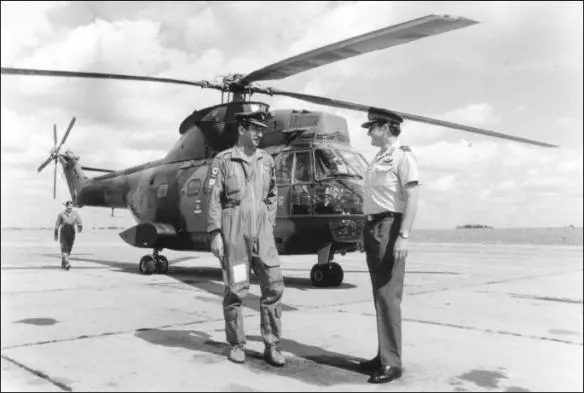
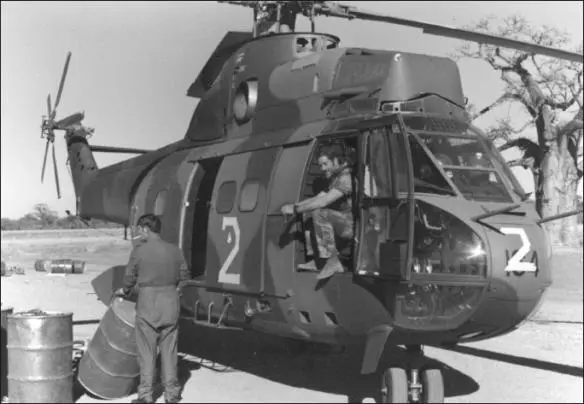
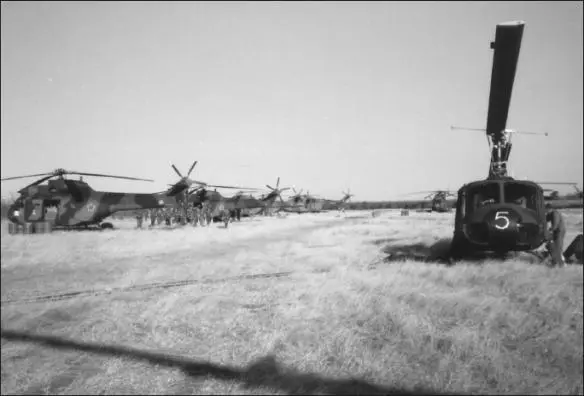
By the end of 1979, the war in Rhodesia was effectively over and within a few months the curtain was drawn on the brief but dramatic history of this, the last problem child of the British Empire. Rhodesia became Zimbabwe and Zimbabwe became a new member of the OAU and the Front Line States, while South Africa inherited yet another hostile black African country committed to her destruction. Political focus now shifted to South West Africa, and the independence agenda for a territory that the United Nations now officially referred to as Namibia.
Читать дальшеИнтервал:
Закладка:
Похожие книги на «SAAF's Border War»
Представляем Вашему вниманию похожие книги на «SAAF's Border War» списком для выбора. Мы отобрали схожую по названию и смыслу литературу в надежде предоставить читателям больше вариантов отыскать новые, интересные, ещё непрочитанные произведения.
Обсуждение, отзывы о книге «SAAF's Border War» и просто собственные мнения читателей. Оставьте ваши комментарии, напишите, что Вы думаете о произведении, его смысле или главных героях. Укажите что конкретно понравилось, а что нет, и почему Вы так считаете.
